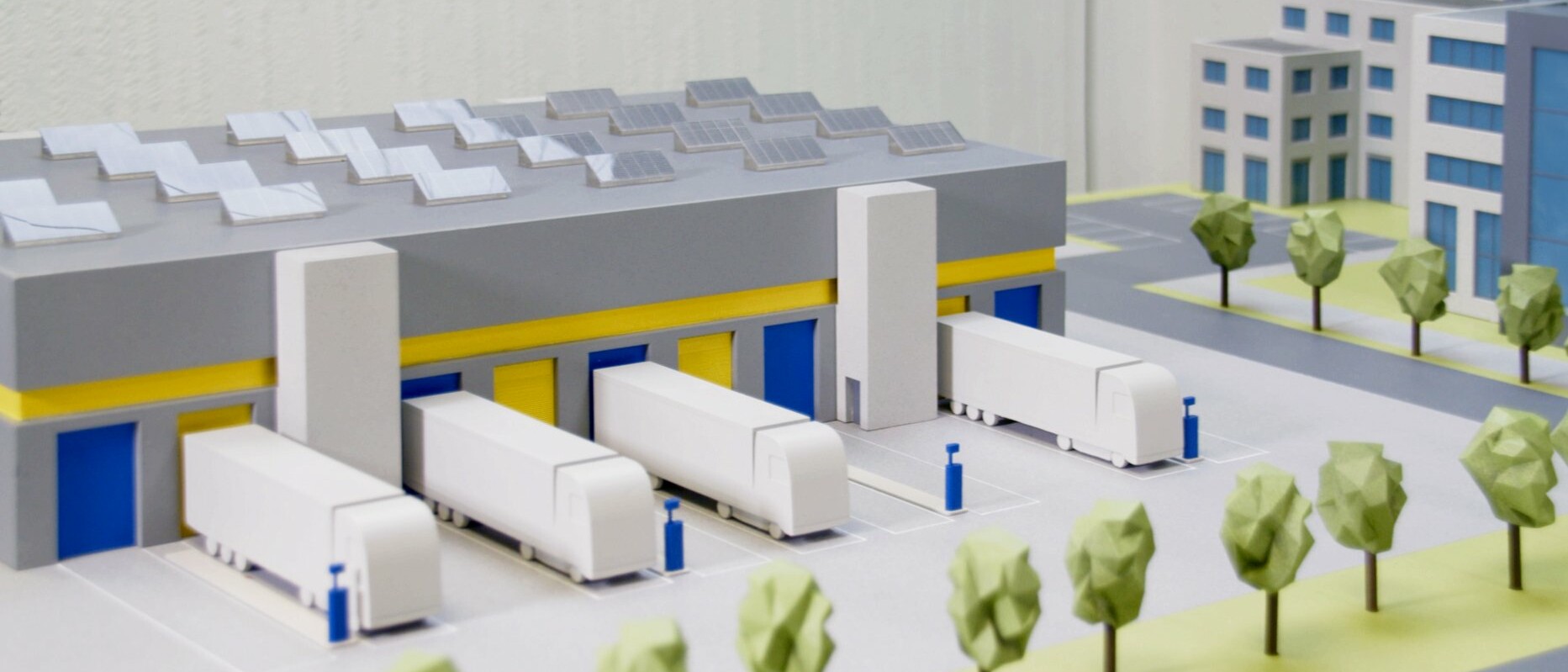Objectives and Approach
Combating the climate crisis was the central focus throughout the project, as Zubr Futures utilised augmented reality to redefine the complex, yet crucial message behind Net Zero emissions.
Designed to showcase Net Zero goals and educate businesses, organisations, councils and governments on their journey to achieving Net Zero sustainability, the physical model served as a tangible starting point for Zubr Futures’ digital experience. Working alongside global specialists, Zubr Futures designated six core areas within the landscape that are key to reducing emissions around the world, including a Next Generation Grid; Renewable Storage; Sustainable Transportation; Smart Energy Solutions; Net Zero/Sustainability; and Carbon Management. It was these six core areas that formed the foundations of Zubr Futures’ augmented reality intervention.
Technical Implementation
The 150cm x 150cm square model created by Amalgam features six zones, each representing one of the six core areas identified in the journey towards Net Zero and the circular economy. It was designed with Zubr’s digital overlay in mind, providing a base over which the interactive digital elements could be displayed. Users simply point the iPad provided at the tracking image on the model, prompting additional information such as text points, videos, infographics, animations and more to appear overlaid on top of the physical object.
To illustrate the practical possibilities of a Net Zero landscape, Zubr’s digital content included a range of sustainable adjustments. These included electric vehicles on the roads and ocean surface; EV charging stations; animated people walking around campus; environmental features such as wildlife and plantlife; digital power pylons, representing the Future Grid with a blue ‘flow’ of electricity around the map; animated wind turbines connected to the Future Gird, solar panels on the roofs of buildings and surrounding areas; and the flow of carbon from the oil rig into the carbon reservoir. Users can explore these sustainable features, revealing the possibilities for climate conscious landscapes in the future.
Key Features and Benefits
The Net Zero City experience offers a diverse range of accessible and engaging features, such as an easy-to-navigate AR landscape, an interactive digital message, and captivating animations which ignite discussions on complex sustainability concepts. What truly distinguishes the Net Zero City project is its remote version. This allows users to access and explore the city from their own devices, enhancing accessibility and engagement for a global audience.
Results and Impact
The digital component of the Net Zero City projects adds a new layer of engagement and interactivity, fostering a deeper understanding and visualisation of Net Zero goals. The project’s crucial message necessitated an accessible platform capable of reaching the broadest possible audience. With this in mind, Zubr Futures developed the remote version of the digital experience, available to download worldwide on any compatible device. This remote interaction enables users to virtually walk around the digital streets, engaging with various educational elements which spring to life as they navigate the Net Zero city.
Conclusion
Zubr Futures’ collaboration with Infosys demonstrates the power of augmented reality when communicating complex messages, particularly in relation to sustainability goals. By combining a physical model with digital overlays, Zubr Futures provided an innovative platform for educating and engaging users in the journey towards achieving Net Zero sustainability. The project’s interactivity, accessibility and immersive elements offer a unique opportunity for inspiring individuals and organisations to take action and build toward a sustainable future.





